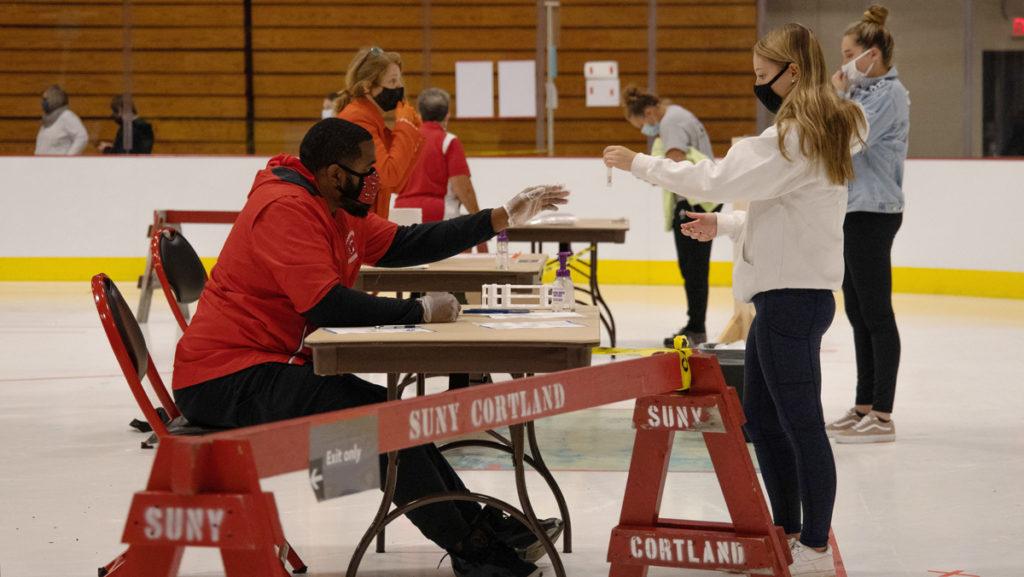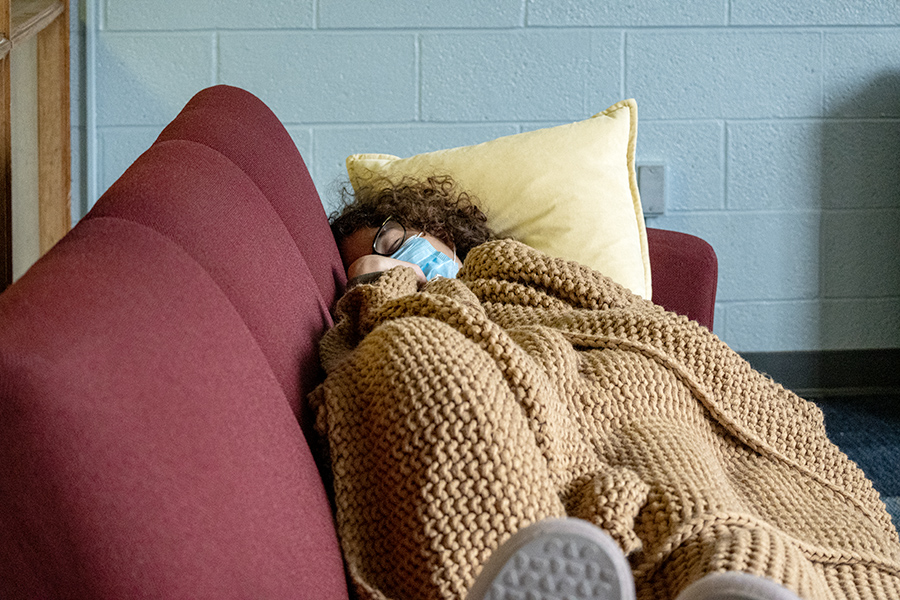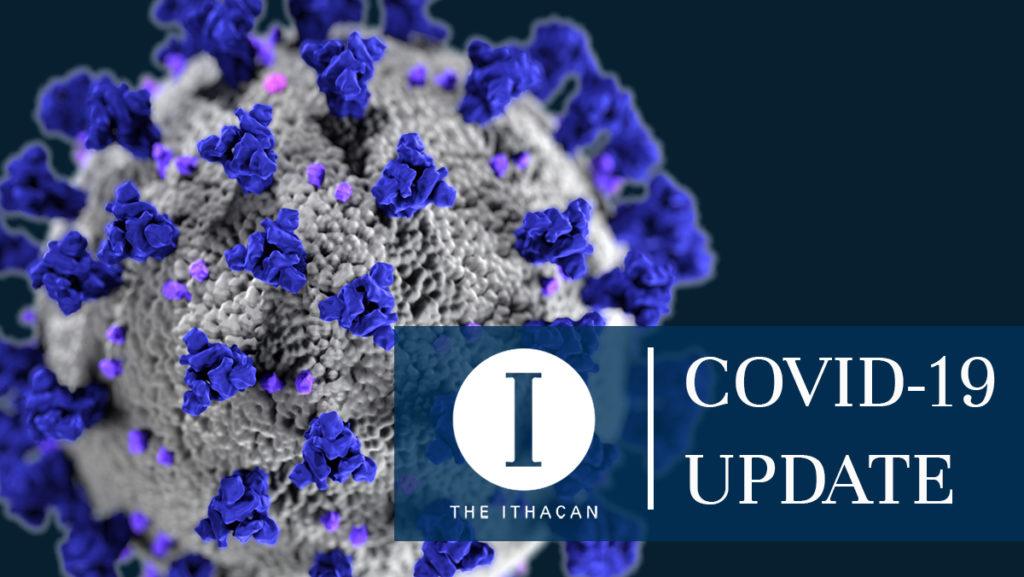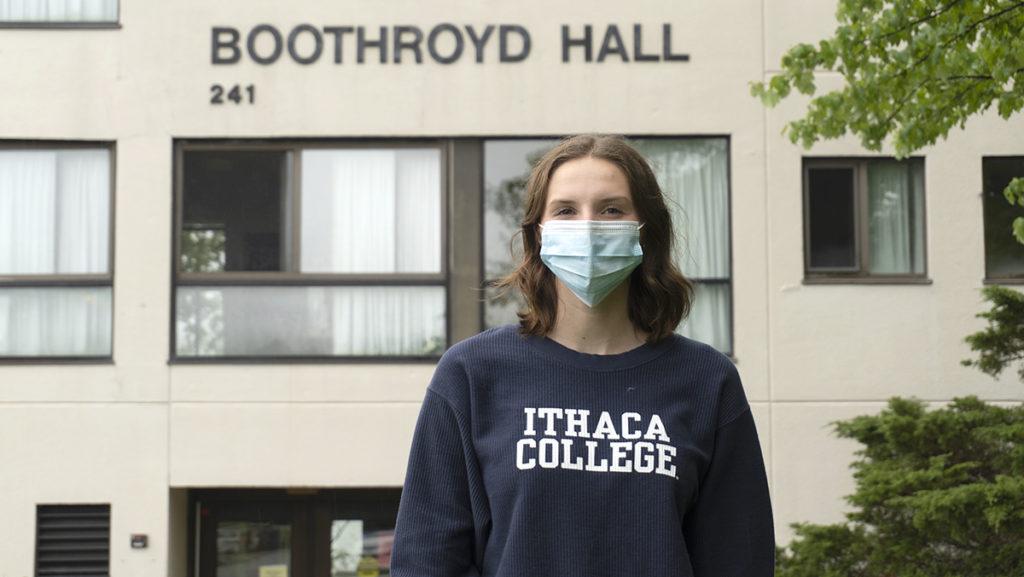The State University of New York at Cortland is transitioning to remote instruction for two weeks because of a rise in COVID-19 cases on campus.
The university made the announcement Oct. 5 that it would shift to “remote study-in-place.” The two-week remote study period began Oct. 7 and will last until Oct. 21. In the two-week reporting period of Sept. 26–Oct. 9, there have been 154 positive COVID-19 cases, according to Cortland’s COVID-19 dashboard. Gov. Andrew Cuomo released guidance for New York state colleges stating that if there are over 100 positive cases or greater than 5% of the student body tests positive for COVID-19 within a 14-day period — whichever is reached first — schools must transition to remote learning for two weeks and limit on-campus activity.
In the announcement from Cortland, President Erik Bitterbaum said students should not go home or travel to other communities to limit the spread of the virus. All classes, including classes requiring hands-on instruction, will be held remotely. If classes are allowed to return to in-person instruction after the two-week remote period, professors may choose to continue teaching online, according to the announcement. Groups larger than six are prohibited, and there will be no indoor seating in dining halls. All athletic in-person activities, as well as extracurricular activities, are also prohibited. Bitterbaum said that testing frequency will be increased over the next two weeks.
The university is located in Cortland County, which is in the central New York state region and is approximately a 40-minute drive from Ithaca College.
The Tompkins County Health Department (TCHD) released a health alert regarding COVID-19 increases in surrounding counties Oct. 7.
“The rise in cases is concerning and reminds us that the virus is still present,” said Frank Kruppa, Tompkins County public health director, in the alert.
The alert states that there has been an increase in positive cases in the Southern Tier region. The region includes Tompkins, Broome, Chenango, Chemung, Delaware, Schuyler, Steuben and Tioga counties. In a briefing Oct. 5, Cuomo identified new COVID-19 hot spots, including zip codes in Tioga and Chemung counties, which neighbor Tompkins County. As of Oct. 8, Tompkins County has 41 active positive cases and two active hospitalizations, according to TCHD.
“This is an important time to remain vigilant and continue the safety protocols put in place in March,” Kruppa said in the alert. “Wash hands well and often, cover nose and mouth with a cloth face-covering mask and keep at least six feet from others who are not in your household.”
As of Oct. 8, Ithaca College has 17 positive cases, nine of which are active, and has conducted a total of 8,816 tests since Aug. 14.
Tompkins Cortland Community College (TC3) had remote classes from Sept. 3 to 11 because of a rise in cases. TC3 has since resumed in-person classes. Cornell University had COVID-19 clusters linked to small social gatherings in which social distancing and mask-wearing were not observed at the beginning of the fall semester. Cornell raised its alert level from low to moderate risk Sept. 3 because of the rise in cases. The university lowered its alert back to low-risk Sept. 16 after two days of no positive cases.
On-campus testing is available for students and employees from 8 a.m. to 4 p.m. every Tuesday and Wednesday in October at the Athletics and Events Center. Students who are experiencing symptoms should call the Hammond Health Center at 607-274-3177. Faculty and staff who are symptomatic are not allowed on campus and should go to the sampling site at The Shops at Ithaca Mall.












